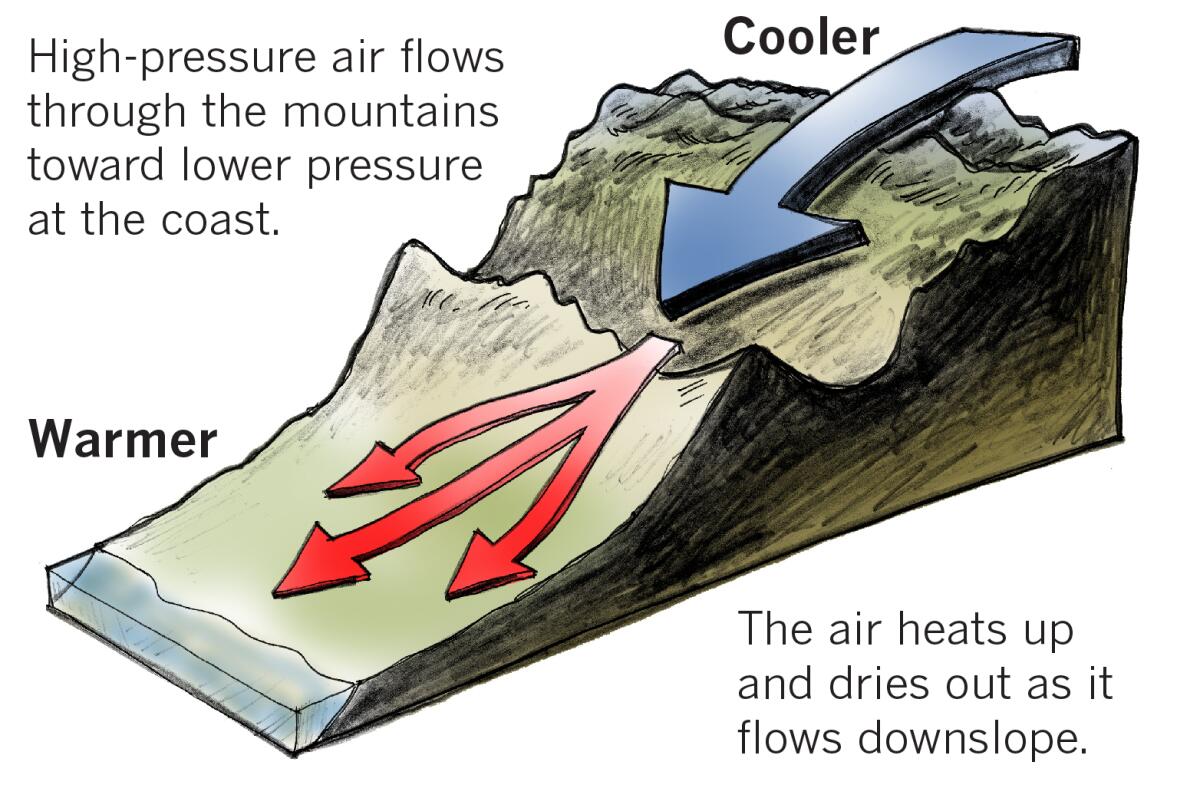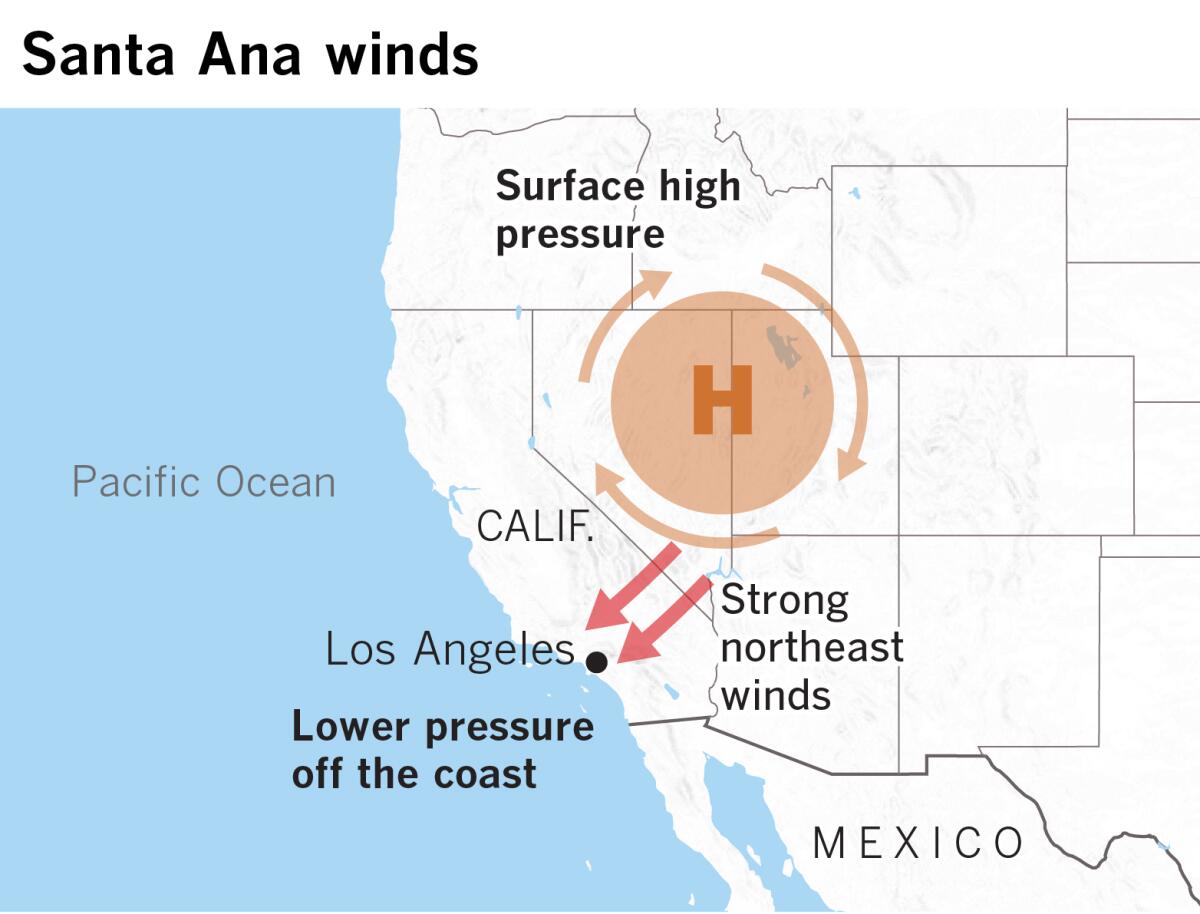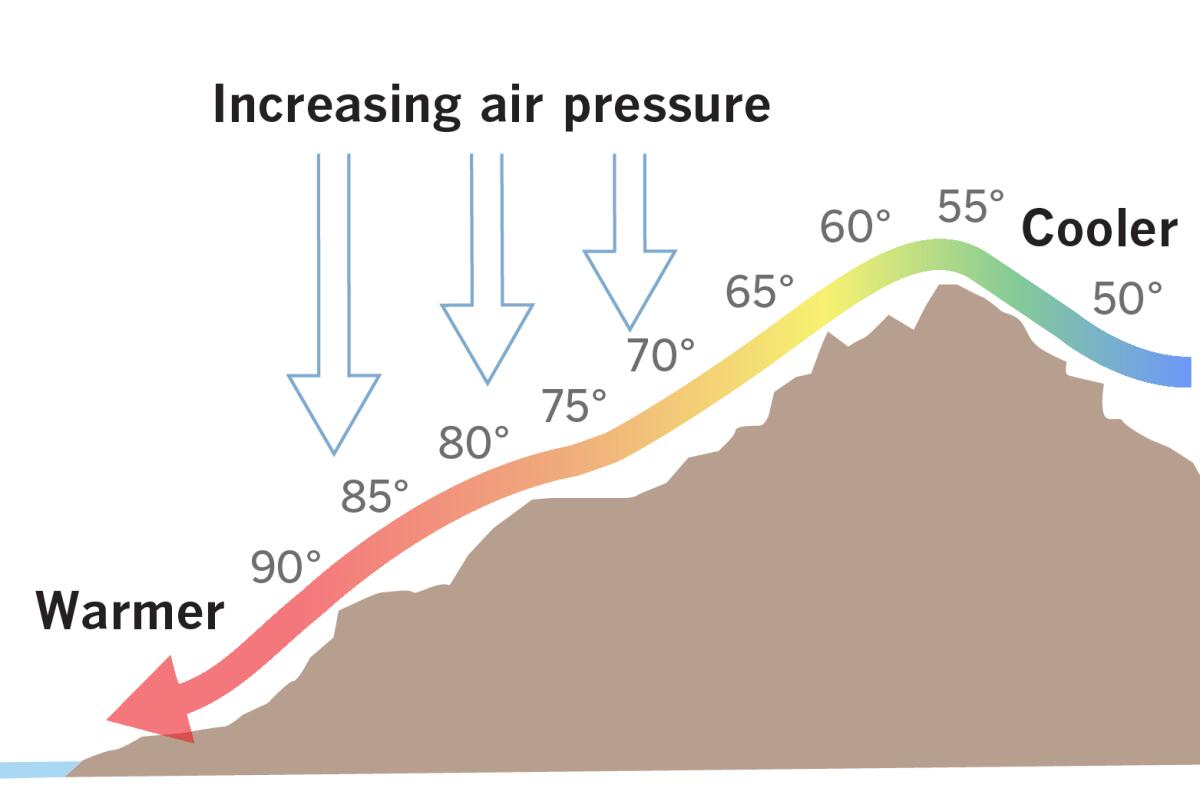What makes the Santa Ana winds blow through Southern California?

- Share via
Santa Ana winds are strong, dry downslope winds in Southern California and northern Baja California. They’re caused by clockwise circulation around areas of surface high pressure east of the Sierra Nevada in the Great Basin region. These offshore winds occur mainly in the fall, but can arise during other seasons as well.

Relatively cool air from the area of high pressure flows across the deserts and through passes in the mountains toward lower pressure at the coast. As the air sinks, it is compressed and warms. It also loses moisture, and the low relative humidity dries out vegetation.

Mountain ranges block the air in places as it heads toward the sea. But the winds seek openings such as passes and canyons, which accelerate the velocity, creating a venturi effect much like a nozzle on a garden hose.
PHOTOS: Northern California deals with unprecedented power outages
Winds can gust from 45 to 100 mph as they squeeze through passes and canyons, according to the National Weather Service, depending on the strength of the event. They can cause turbulence that interferes with flight operations and can overturn high-profile vehicles on freeways. They can blow down tree limbs and cause other damage. If the winds are strong enough, they can cause rough seas for mariners in the inner waters off the coast at least as far offshore as the eastern side of Catalina Island.
The winds not only dry out vegetation, they can carry hot embers, spreading smaller fires well beyond a wildfire, once it has been ignited.
Santa Ana winds usually bring the lowest relative humidity of the year to Southern California. In his 1938 story, “Red Wind,” Raymond Chandler describes them this way: “There was a desert wind blowing that night. It was one of those hot dry Santa Anas that come down through the mountain passes and curl your hair and make your nerves jump and your skin itch.” He goes on, saying, “Meek little wives feel the edge of the carving knife and study their husbands’ necks.”
In “Slouching Towards Bethlehem,” Joan Didion says, “… [T]he violence and the unpredictability of the Santa Ana affect the entire quality of life in Los Angeles, accentuate its impermanence, its unreliability. The wind shows us how close to the edge we are.”
There isn’t complete agreement about the origin of the name of the winds, but it is generally thought to have been derived from the Santa Ana Canyon, where the Santa Ana River passes between the Chino Hills and the Santa Ana Mountains, roughly where Riverside, Orange and San Bernardino counties come together.
The “Devil Winds” may blow mostly in the fall and winter, but the 91 Freeway through the pass can be counted on to have devilish traffic year around.
More to Read
Sign up for Essential California
The most important California stories and recommendations in your inbox every morning.
You may occasionally receive promotional content from the Los Angeles Times.








